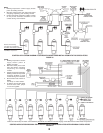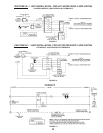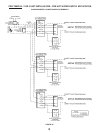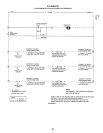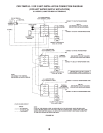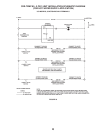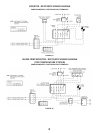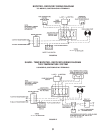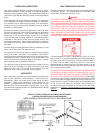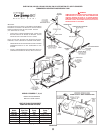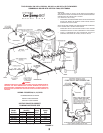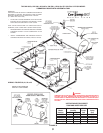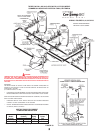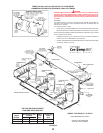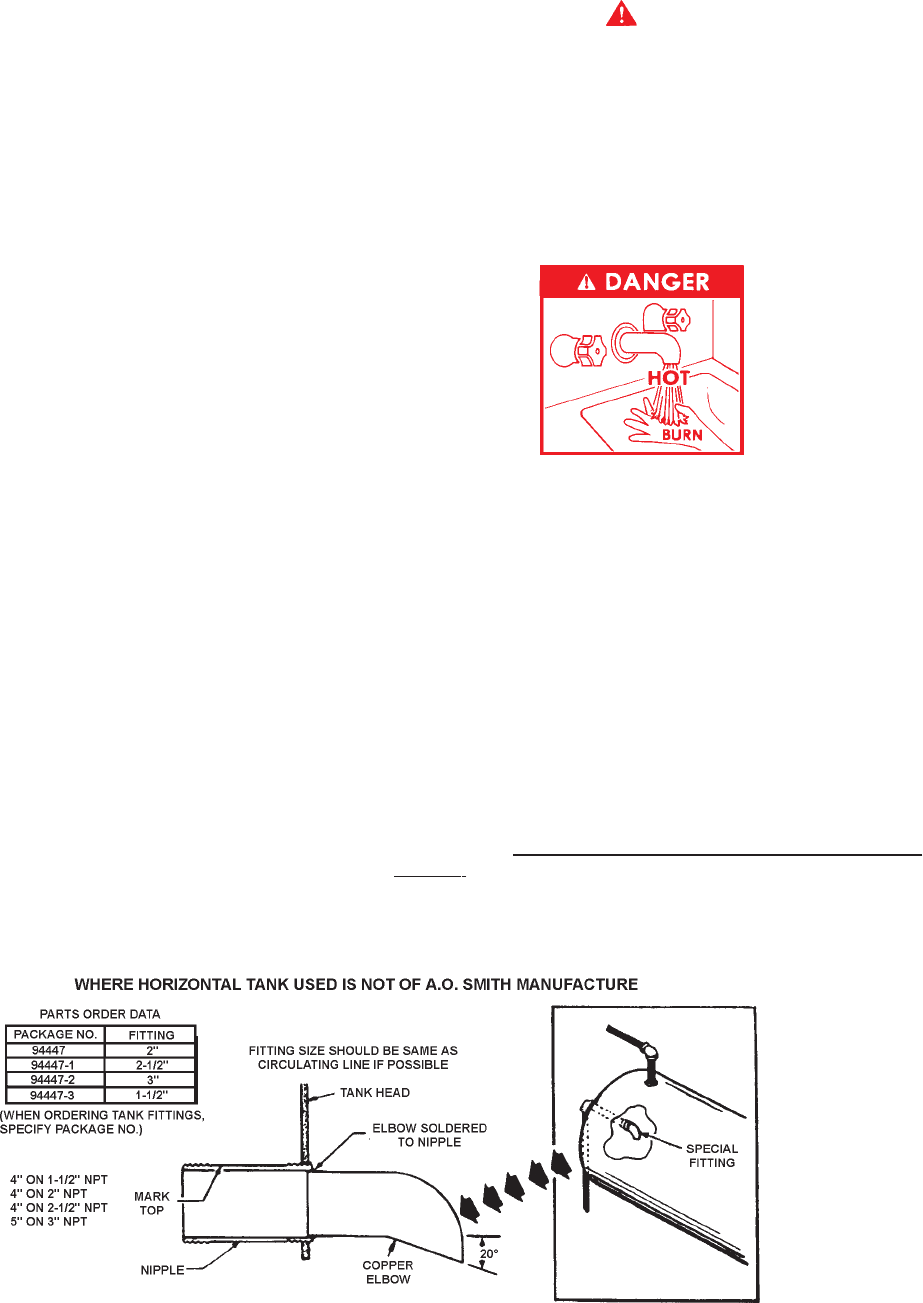
3232
3232
32
WATER LINE CONNECTIONS
This section provides detailed installation diagrams for typical
methods of application for the unit using a Cer-Temp 80 Recovery
System (for one temperature water), and either Booster-Recovery
or the Shure-Temp Booster-Recovery System (for two temperature
water).
These diagrams will serve to provide the installer with a reference
for the materials and methods of piping necessary for installation.
It is essential that all water and gas piping, vent connections,
electrical wiring, and check and flow regulating valves be installed
as shown on the diagrams.
Consult the installation diagrams for appropriate locations to install
the safety flow switch(es), drain valves, thermometers, relief valves
and the circulating pump(s). Apply suitable pipe thread sealing
compounds to only the male threads of parts to be connected.
If any of these parts are being replaced in a functioning system,
remember to shut off the manual gas and control valve(s) and
close off the water inlet(s). Open a nearby faucet to relieve pressure
and/or drain the boiler or system before attempting to install the
new parts.
Check the diagrams thoroughly before starting installation to avoid
errors and minimize time and materials cost.
If the system is to be filled with water for testing or other purposes
during cold weather and before actual operation, care must be
taken to prevent a downdraft entering the boiler or freezing air from
contacting the system. Failure to do so may cause the water in the
system to freeze with resulting damage to the system. Damage
due to freezing is not covered by the warranty.
This equipment must be protected against loss of water or loss of
water flow by the installation of a safety flow switch in the outlet
piping from the boiler. Piping and wiring diagrams show the
application of the accessory package for this purpose.
HARD WATER
Where hard water conditions exist, water softening or the threshold
type of water treatment is recommended. This will protect the
dishwashers, coffee urns, water boilers, water piping and other
equipment. When water softening or water treatment is not
practical, a comparatively easy method of periodic lime removal
from the boiler may be employed by installing gate valves, drain
valve and acid fill opening as shown in CLEANING AND FLUSHING
section of this manual.
TANK TEMPERATURE CONTROL
The water temperature in the storage tank is controlled by the Tank
Temperature Control. The sensing element is mounted inside
the hot water storage tank, see fig's. 31-38.
DANGER
HOT WATER TEMPERATURES REQUIRED FOR AUTOMATIC
DISHWASHER AND LAUNDRY USE CAN CAUSE SCALD BURNS
RESULTING IN SERIOUS PERSONAL INJURY AND/OR DEATH.
THE TEMPERATURE AT WHICH INJURY OCCURS VARIES WITH
THE PERSON’S AGE AND TIME OF EXPOSURE. THE SLOWER
RESPONSE TIME OF CHILDREN, AGED OR DISABLED
PERSONS INCREASES THE HAZARDS TO THEM. NEVER ALLOW
SMALL CHILDREN TO USE A HOT WATER TAP, OR TO DRAW
THEIR OWN BATH WATER. NEVER LEAVE A CHILD OR DISABLED
PERSON UNATTENDED IN A BATHTUB OR SHOWER.
The tank temperature control is adjustable from 100°F (37.7°C) to
220°F (104.4°C). It is recommended that lower water temperatures
be used to avoid the risk of scalding. It is further recommended, in
all cases, that the water temperature be set for the lowest
temperature which satisfies the user’s hot water needs. This will
also provide the most energy efficient operation of the water heater
and minimize scale formation.
THE WATER HEATER SHOULD BE LOCATED IN AN AREA WHERE
THE GENERAL PUBLIC DOES NOT HAVE ACCESS TO SET
TEMPERATURES. SETTING THE WATER TEMPERATURE AT
120°F (49°C) WILL REDUCE THE RISK OF SCALDS. Some states
or provinces require settings at specific lower temperatures. Below
you will find listed the approximate time-to-burn relationship for
normal adult skin. Valves for reducing point-of-use temperature by
mixing cold and hot water are available. Also available are
inexpensive devices that attach to faucets to limit hot water
temperatures. Contact a licensed plumber or the local plumbing
authority.
FIGURE 28
DETAIL OF TANK FITTING USED WITH MODIFIED RECOVERY
AND BOOSTER RECOVERY PIPING DIAGRAMS



